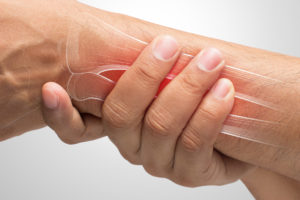
It’s possible to have weak bones without osteoporosis. There is a condition that generally occurs before osteoporosis called osteopenia, and it affects about half of Americans over 50.
Bones don’t just jump from strong to weak. There are stages of bone density that are affected by several factors. Although bone loss occurs naturally with age, there are decisions a person can make that influence how quickly bone degrades.
Bone strength is measured with bone mineral density. When the mineral is dense, bone is strong. When it’s not, it is weak. You can find out your bone strength with a non-invasive x-ray.
Based on your x-ray, you’ll be assigned a T-score. The range for osteopenia is -1 to -2.5. What does that all mean? If your 50+ and have a -1 T-score, you’ve got a 16% chance of fracturing a hip. At -2, that risk jumps to 27%. The risk is 33% at -2.5.
Osteopenia is not a guarantee. Neither is osteoporosis. You can control bone loss, to an extent, and certain factors help limit loss and encourage the maintenance of strong, healthy bones.
Getting enough calcium and vitamin D is essential for healthy, strong bones. Those nutrients work together to absorb and build strong bone. Adequate potassium and magnesium also promote healthy bones.
Weight-bearing exercises like walking, jogging, and weight training also help with bone density. Putting bones under stress helps them stay healthy, provided you’re getting enough calcium and vitamin D.
Certain medications can drain bone mineral density. If you’re taking a corticosteroid to ease swelling, itching, or other symptoms, be diligent about your nutrition and exercise to promote bone density.
Smoking and alcohol consumption can also speed up bone loss.
Osteopenia and osteoporosis don’t have to be in your future. Take a pre-emptive approach to bone strength to reduce the risk of dangerous falls and fractures.